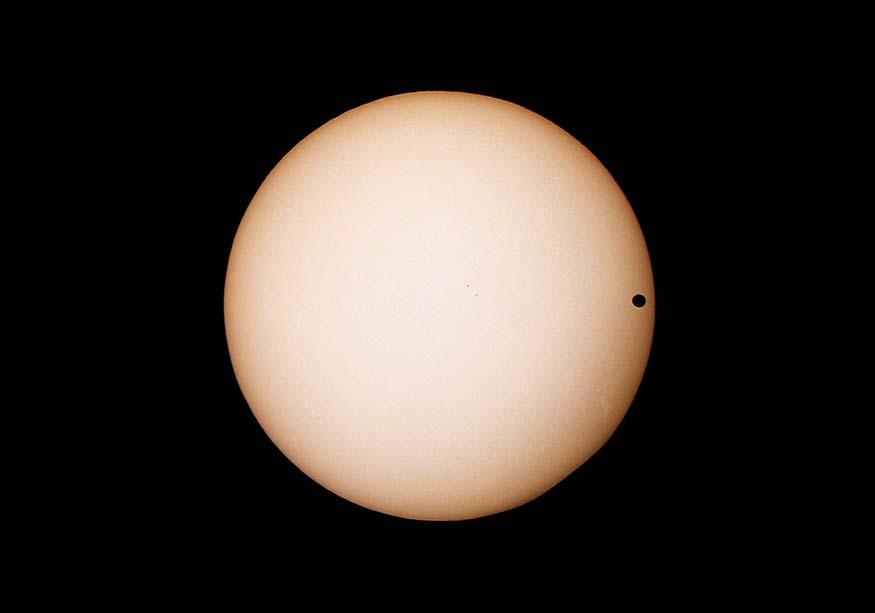
BEAUTY: 
BRAGGING RIGHTS: Once-in-a-lifetime event
HOW EASY IS IT TO SEE? Requires special equipment
TYPE: Special event
DISCOVERED: Known since antiquity
In the popular imagination, scientists spend their days doing experiments in the lab. There is some truth to this, of course, but what about astronomers? They can’t experiment on stars and planets, can they? In fact, they can!
It’s true that astronomers can’t set up controlled experiments for stars or planets, but they can wait for the cosmos to set it up for them. A transit—when a planet passes in front of the sun—is exactly that: an experiment that Mother Nature has set up for us.
When Mercury passed in front of the sun in 1769, its sharp silhouette revealed that it had no atmosphere. Much rarer transits of Venus were used in the eighteenth and nineteenth centuries to determine the distance from the Earth to the sun.
Today, astronomers look for alien worlds orbiting distant star systems by watching for a slight dip in the star’s brightness. If the dimming follows a certain pattern, we deduce that a transit has happened, implying the existence of a planet. We may never be able to visit any of those worlds, but their chance alignment is enough to reveal their existence. All we had to do was look.
Transit dates. Transits of Mercury happen about a dozen times per century; the next one will happen in 2019. Transits of Venus are much rarer. The next one won’t happen until 2117—another century from now. For detailed transit information, visit NASA’s spectacular Eclipse site: http://eclipse.gsfc.nasa.gov/eclipse.html.
Practice safe observing. Use appropriate solar filters to observe the sun. Do not take any chances with your eyesight. Solar projection also works well (see for details).
Black-drop effect. When the transit is about to occur, look to the sun (again, with eye protection). As Mercury (or Venus) first crosses the edge of the sun, you’ll see more and more of the silhouette. Eventually you’ll see a black circle just touching the edge of the sun—it will look like a black drop hanging on to the sun’s edge. Moments later the drop will detach and the planet will be fully inside the sun’s circle as it moves across the face of the sun.